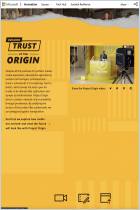加入 getAbstract 阅读摘要

加入 getAbstract 阅读摘要
Craig Silverman
How to Spot a Deepfake like the Barack Obama–Jordan Peele Video
Buzzfeed, 2018
看看什么内容?
Fake video and audio make it harder than ever to decide what’s real, but you can get it right with a little vigilance.
Recommendation
For several years, halfhearted jokes about not being able to believe what you see on the Internet have pervaded popular culture. But during the 2016 US presidential election, “fake news” became not just a household term but a political weapon. Now, deception artists have an extended playing field thanks to the latest generation of voice-swapping and face-swapping technologies. Before long, it might be hard to decide if you’re watching a White House press conference or some hacker’s concoction. Using Jordan Peele’s impressive deepfake simulation of former president Barack Obama as an example, BuzzFeed media editor Craig Silverman explains how you can avoid being duped by deepfake videos. getAbstract recommends following his advice before you share another news video.
Summary
About the Author
Craig Silverman is a Canadian journalist who serves as BuzzFeed’s media editor.

















Comment on this summary